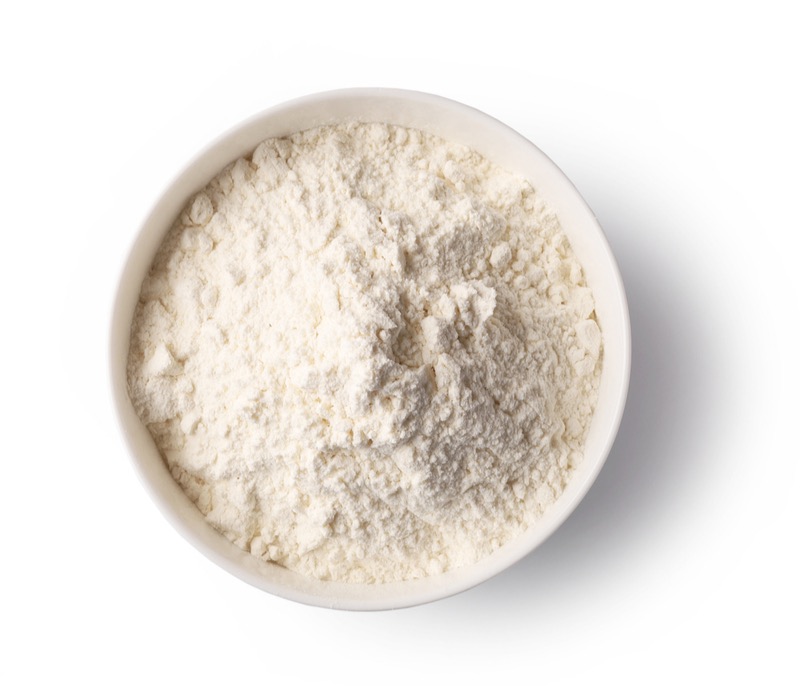Yah, You got it right!!!
A new startup company in Finland has a unique idea of extracting edible food from carbon dioxide.
The name of the company is Solar Foods Ltd. and this company is quite interesting because of its idea.

This edible food looks, feels and also tastes like wheat flour which is highly rich in protein, carbohydrates, and fats. This company claims that it uses only air, electricity, water, and special microbes (an undisclosed type of soil-derived bacteria) to produce this food.
Solein is the name given to this single-cell protein by Solar Foods Ltd. The company plans to sell its products by 2021.
During the production of Solein, 100 times less water is needed than soy-based plants and 20,000 times less land is required than traditional farming.
Lets comparison it with beef and soy,
For 1kg of beef, 15,000 litres of water is required.
For 1kg of soy. 2,500 litres of water is required.
But,
For 1kg of Solein, 10 litres of water is required!!!
Also,
In terms of land efficiency, Solein is 10 times more efficient than soy production per acre.
It costs about £4.50 per kg.
So, How do they make it?
First, they extract carbon dioxide from the air and add it to hydrogen bubbles (via electrolysis) released from the water. Then, feed it to an undisclosed type of soil-derived bacteria. This bacteria releases protein which is dried up to make powder. This type of food production is called a carbon-neutral way.

CEO of Solar Foods Ltd., Dr. Pasi Vainikka says,' It is a completely new kind of food, a new kind of protein, different to all the food on the market today in how it is produced as it does not need agriculture or aquaculture.'.
He also said, 'We thought that making food from the air and the renewable electricity -which is becoming cheaper and cheaper - and would make it for the most environmentally friendly food there is. We could therefore disconnect food production from agriculture, which would then enable scaling without agricultural limitations[such as weather and irrigation].'.
By the way, it may be used as "Space Food". Once NASA planned to use some kind of food like this but that was only on papers. Solar foods are collaborating with the European Space Agency Business Incubation Centre in order to use it as food in future space missions.
As we know Mars atmosphere is mainly carbon dioxide, which may become a great deal for human colonisation on Mars.
So, That's it for now.
Thanks for Reading
Read More :
Internet of Future - Quantum Internet
Bored at Home ??? Best projects you can try out when bored - Science Feed
Pandemics Before Coronavirus That Shook The Whole World - Science Feed
A new startup company in Finland has a unique idea of extracting edible food from carbon dioxide.
The name of the company is Solar Foods Ltd. and this company is quite interesting because of its idea.

This edible food looks, feels and also tastes like wheat flour which is highly rich in protein, carbohydrates, and fats. This company claims that it uses only air, electricity, water, and special microbes (an undisclosed type of soil-derived bacteria) to produce this food.
Solein is the name given to this single-cell protein by Solar Foods Ltd. The company plans to sell its products by 2021.
During the production of Solein, 100 times less water is needed than soy-based plants and 20,000 times less land is required than traditional farming.
Lets comparison it with beef and soy,
For 1kg of beef, 15,000 litres of water is required.
For 1kg of soy. 2,500 litres of water is required.
But,
For 1kg of Solein, 10 litres of water is required!!!
Also,
In terms of land efficiency, Solein is 10 times more efficient than soy production per acre.
It costs about £4.50 per kg.
So, How do they make it?
First, they extract carbon dioxide from the air and add it to hydrogen bubbles (via electrolysis) released from the water. Then, feed it to an undisclosed type of soil-derived bacteria. This bacteria releases protein which is dried up to make powder. This type of food production is called a carbon-neutral way.

CEO of Solar Foods Ltd., Dr. Pasi Vainikka says,' It is a completely new kind of food, a new kind of protein, different to all the food on the market today in how it is produced as it does not need agriculture or aquaculture.'.
He also said, 'We thought that making food from the air and the renewable electricity -which is becoming cheaper and cheaper - and would make it for the most environmentally friendly food there is. We could therefore disconnect food production from agriculture, which would then enable scaling without agricultural limitations[such as weather and irrigation].'.
By the way, it may be used as "Space Food". Once NASA planned to use some kind of food like this but that was only on papers. Solar foods are collaborating with the European Space Agency Business Incubation Centre in order to use it as food in future space missions.
As we know Mars atmosphere is mainly carbon dioxide, which may become a great deal for human colonisation on Mars.
So, That's it for now.
Thanks for Reading
Read More :
Internet of Future - Quantum Internet
Bored at Home ??? Best projects you can try out when bored - Science Feed
Pandemics Before Coronavirus That Shook The Whole World - Science Feed
